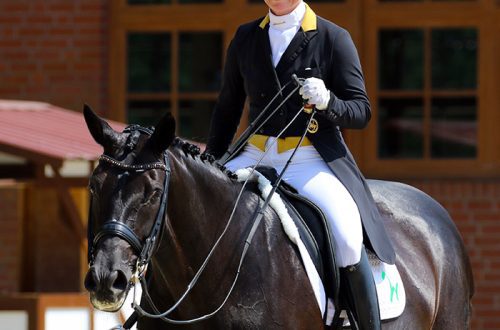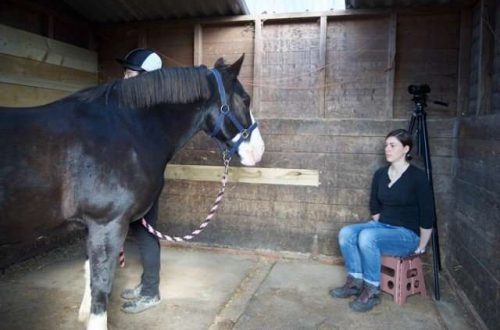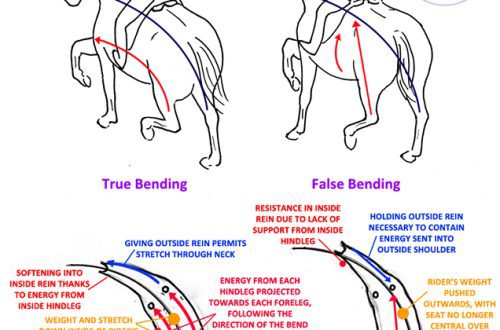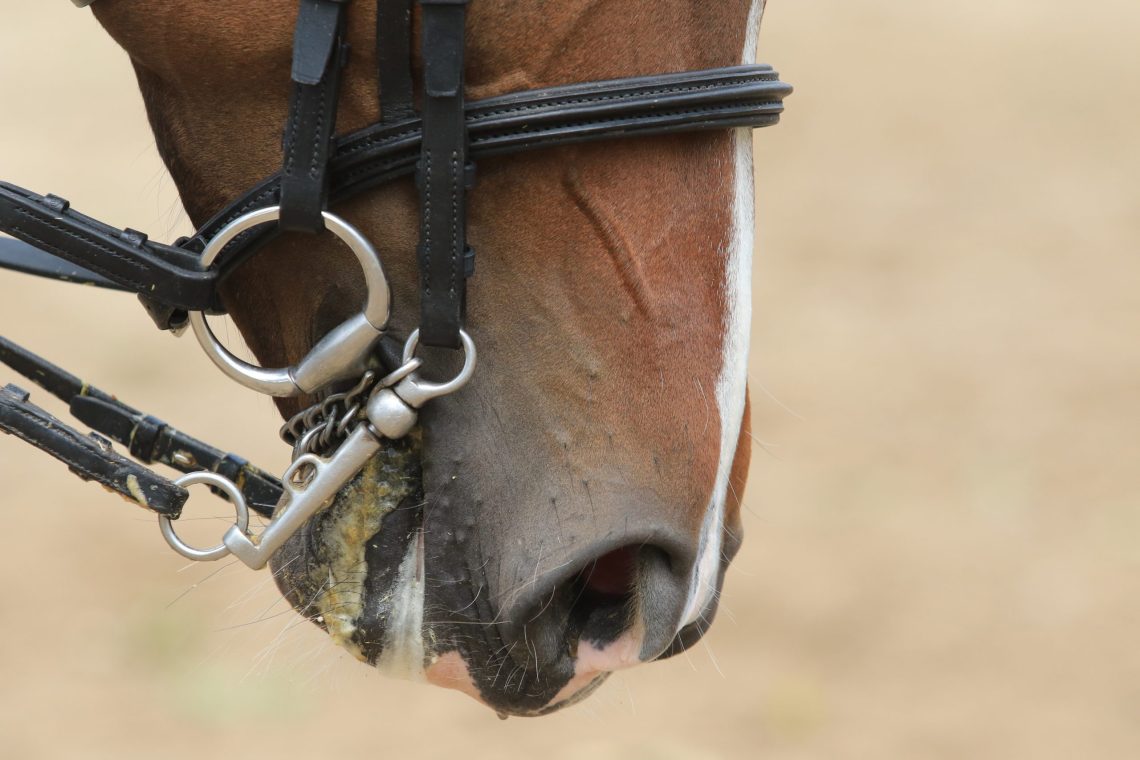
Proper contact with the horse’s mouth: how to achieve it
Let’s talk about proper contact with the horse’s mouth. How to achieve it? With proper contact, the horse’s mouth is calm, sensitive and relaxed with ample foam on the lips. This is the result of proper work in which the horse is well balanced.
How we work a horse is reflected in the state of his mouth, as the neck and chewing system are closely related through biomechanics. The postav of a neck influences growth and chewing functions. Therefore, we must pay sufficient attention to the correct position of the neck in everyday work.

Photo: Eurodressage.com.
Problems associated with incorrect contact.
At a master class in Finland Coach Colonel Christian Carde highlights three options for what a horse’s mouth might look like after work:
1. Dry mouth: The horse’s mouth remains dry at the beginning of work, during and after. The horse is usually tense and moves stiffly.
2. Excessive Foam: This can be found on the horse’s neck and shoulders. The horse cannot swallow properly due to improper contact, framing, or tightness in the nose area.
3. Soft mouth – correct mouth: the horse is relaxed, some saliva is present, it looks as if the horse’s lips were lined with foam lipstick. The foam is equally visible on both sides.
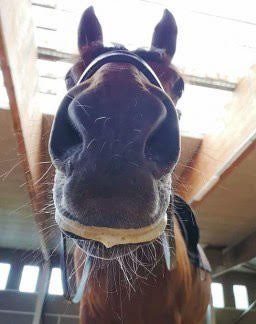
Photo: Eurodressage.com.
Of course, there are many variations of stress symptoms. A tense horse may have a restless mouth or a dead mouth, there may be various problems related to tongue, contact with the reins or neck position – usually in these cases the rider tries to find the right bit by trying different types of snaffles.
Sometimes it works, but usually the problem is solved by using the simplest hardware and doing it right. Each horse’s mouth and head structure is different, so of course the bit we use must be suitable for that particular horse in order to avoid discomfort that can lead to stress and various types of compensation. The bit is one of the most important elements for proper interaction with the horse and ensuring his well-being, but with the right snaffle, the work only begins.
The structure of the chewing system of the horse.
The chewing system of a horse can be divided into passive (teeth, jaw bones, temporomandibular joint) and active (muscles, nerve fibers) systems. In an adult horse, the number of permanent teeth is 36-40 and sometimes reaches 44 pieces. The snaffle is located between the incisors and molars on the edentulous areas that are on both sides of the jaw. Horses have a wide upper jaw and a narrower lower jaw. The tongue and hyoid bone are located inside the space of the lower jaw, between the cheeks.
If the horse is tense and resists the bit, the facial muscles become tense and the largest facial muscle contracts. All this causes tension in the temporomandibular region, which in itself is very sensitive and plays an important role in the balance of the horse. In addition, this zone affects the movement of the forelimbs and soreness in this zone can manifest itself in the form of lameness and pain in the cervical muscles (brachiocephalic zone and some others).
The temporomandibular area is also closely related to the tongue, which plays an important role in the degree of horse riding and the quality of its movements. Tension always generates a muscular response in the horse’s body, and this can drastically change how muscles and other organs work. The problem is that the chewing system usually changes depending on the horse’s daily work or lifestyle.
Tension of the lower jaw.
If the rider puts too much pressure on the mouth for a long period of time, it causes a lot of stress in the lower jaw area. Such a hard rein can cause physical damage to the area in which the snaffle is located, the tongue and soft tissues of the mouth and cheeks. Some horses will hide behind the reins because pressure on the tongue and tension in the larynx affects breathing – the horse will try to create more space for himself to breathe.
If the horse grinds his teeth or constantly opens his mouth, this is also a sign of tension or discomfort, and should not be regarded as just a bad habit.
He gnashed his teeth.
Sometimes riders say that their horse is correctly ridden, but it continues to grind its teeth. Grinding of teeth always generates a lot of tension and can lead to problems similar to human problems with bruxism. This should not go unnoticed.
The cause of such a habit may be pain, stress or discomfort and it is necessary to carefully analyze the situation, because this habit itself can cause pain, discomfort or stress. It is important to help the horse get rid of this habit, although it can sometimes be difficult to determine the cause of this behavior.
The horse is behind the reins.
The horse can also be dead in the mouth, pinched in the jaw and neck area, even if the rider is not using the reins roughly. With this problem, the rider usually feels that the horse is in the correct frame, but he hides behind the reins. Riders usually say in such cases that the contact is light, but this is the wrong lightness. When this happens, the contact with the reins is almost gone, and the horse over-compresses the frame, going off to collect. This position changes the musculature of the neck and affects the temporomandibular joint and the entire lower jaw and tongue.
This needs to be corrected by focusing on the most basic things when working: quality of contact with the rein (soft hand), balance (open frame), impulsion (horse moving from the back).
The Key to a Successful Presentation – keep all these sensitive areas in the most relaxed state.
Source: Eurodressage.com



